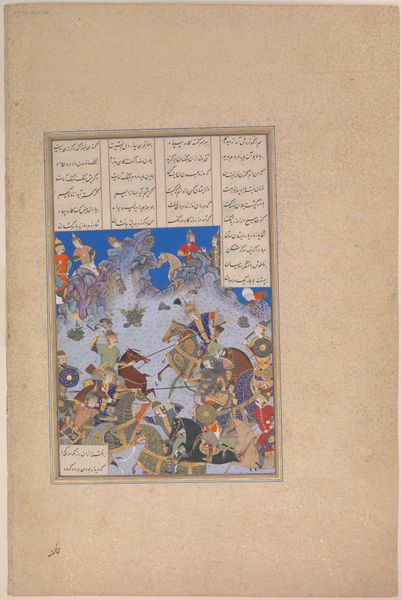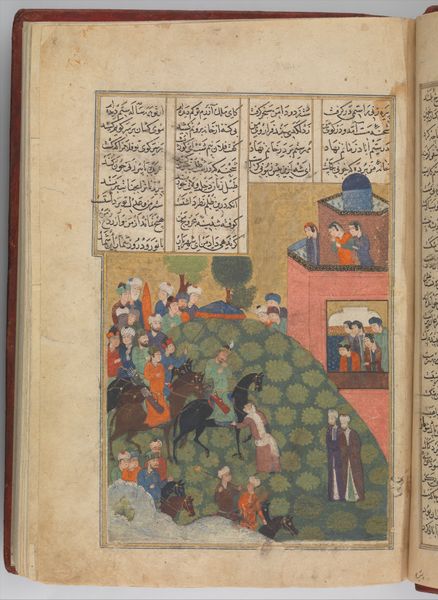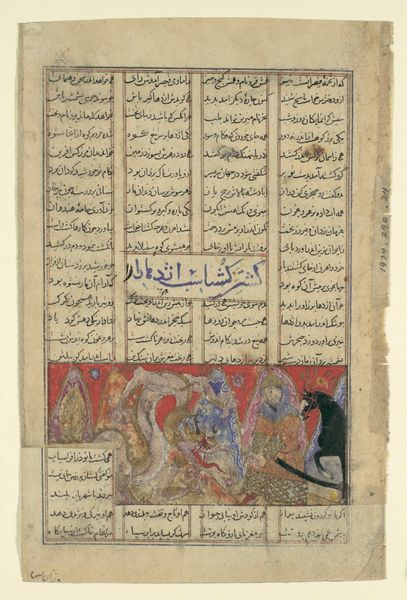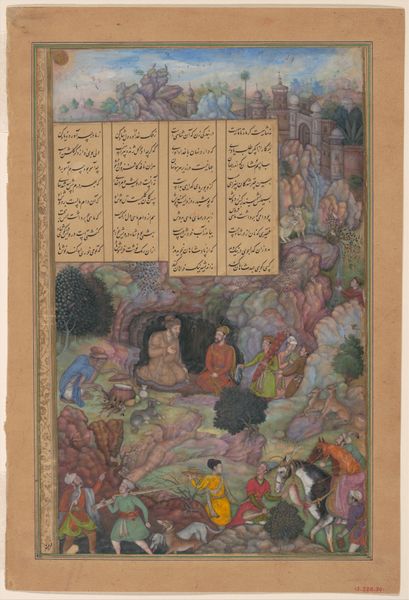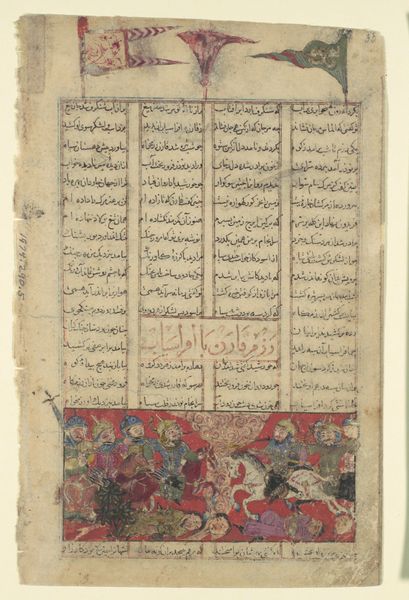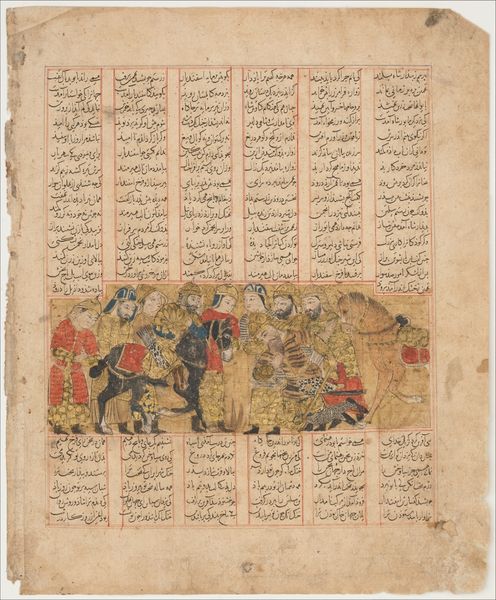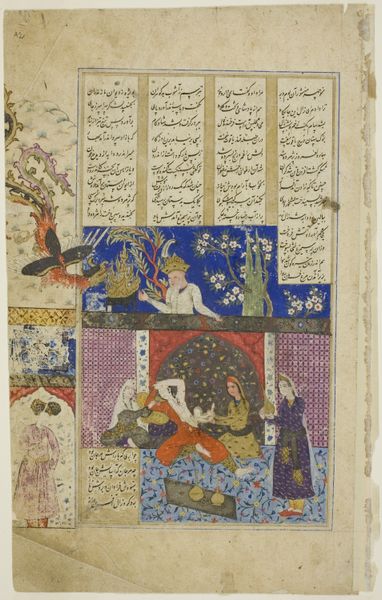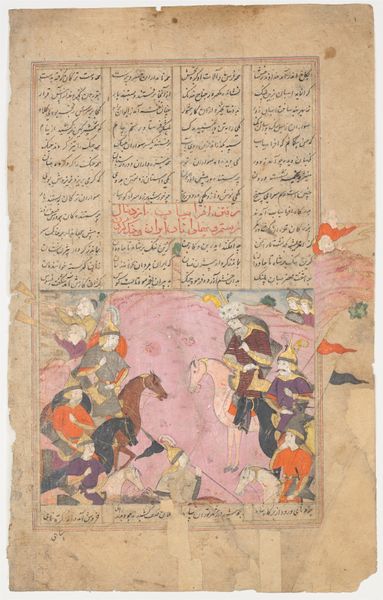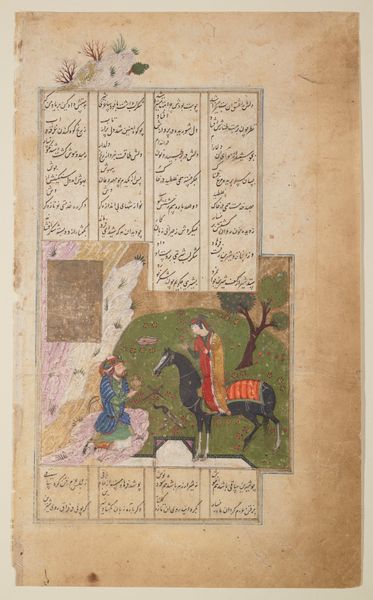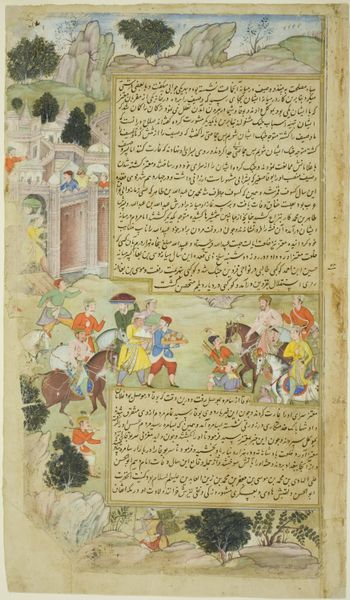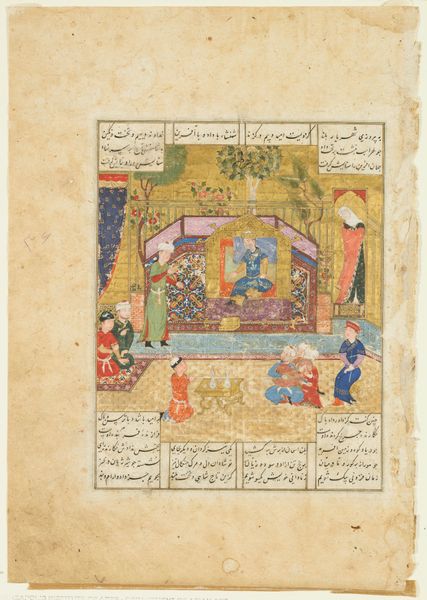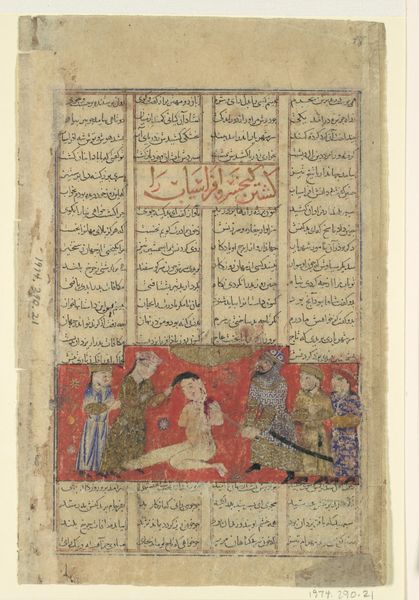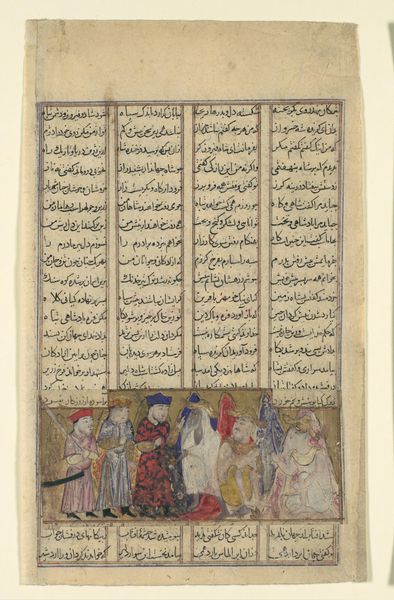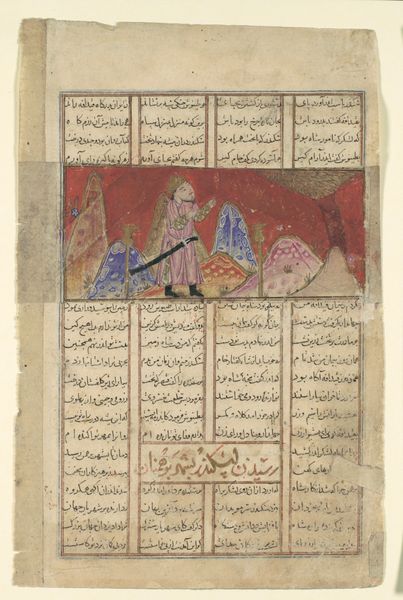
"The Fire Ordeal of Siyavush", Folio from a Shahnama (Book of Kings) of Firdausi 1457 - 1507
0:00
0:00
tempera, painting, paper, ink
#
narrative-art
#
tempera
#
painting
#
figuration
#
paper
#
ink
#
horse
#
men
#
islamic-art
#
history-painting
#
miniature
Dimensions: H. 12 3/16 in. (31 cm) W. 7 15/16 in. (20.2 cm)
Copyright: Public Domain
Curator: Looking at this exquisite piece from the late 15th or early 16th century, we see "The Fire Ordeal of Siyavush," a folio from a Shahnama, or Book of Kings, crafted in tempera, ink, and gold on paper. The artwork is now held at the Metropolitan Museum of Art. Editor: My first impression is how strikingly theatrical it feels! There's a distinct stage-like quality to the composition with that stark fire element. And the intense colors really pull the viewer in. Curator: Indeed. This scene captures a pivotal moment in the epic poem where Siyavush undergoes a trial by fire to prove his innocence. Consider the cultural significance: fire as a purifying element. It mirrors Zoroastrian beliefs woven into Persian identity. Editor: Right, but the real cultural drama unfolds with the two onlookers peering from above. Are they judging, doubting, or secretly hoping for Siyavush's failure? It’s about the spectacle as much as the supposed justice, isn't it? How power observes and interprets innocence. Curator: Precisely. Their elevated position adds to the social commentary. This Shahnama wasn't just art; it served as visual propaganda, reinforcing dynastic legitimacy and promoting certain ethical ideals within its contemporary society. It shows that the gaze of authority and public opinion are important for the integrity of a system, even when justice is delivered divinely. Editor: You've highlighted that well. Looking closer, I can see the precision in the rendering of the flames—almost ornamental, wouldn't you say? It seems to celebrate, rather than condemn, Siyavush's experience. Curator: Absolutely! The miniaturist uses the visual vocabulary of the time not to portray stark realism, but to elevate the moral narrative. The fire is symbolic and ornate, illustrating how the hero comes out of this event as even more righteous. Editor: Thinking about this miniature today, I'm reminded of how historical art can question justice. The scene pushes us to consider if the "truth" can exist in spectacular tests, and how observers will react. Curator: Exactly! This illuminated page stands not just as a window into Persian cultural memory but also as a powerful reminder of how political art can work across generations.
Comments
No comments
Be the first to comment and join the conversation on the ultimate creative platform.
